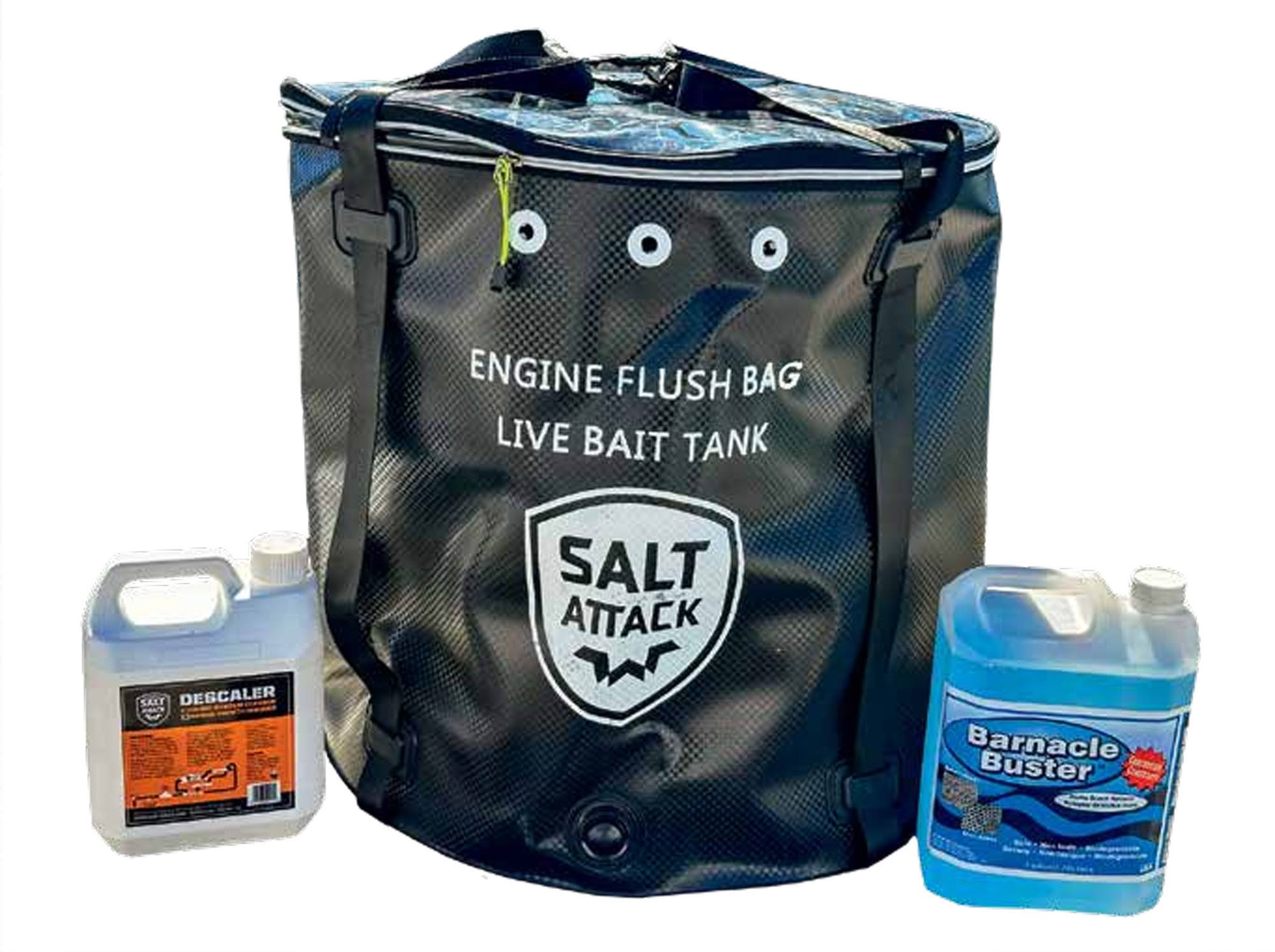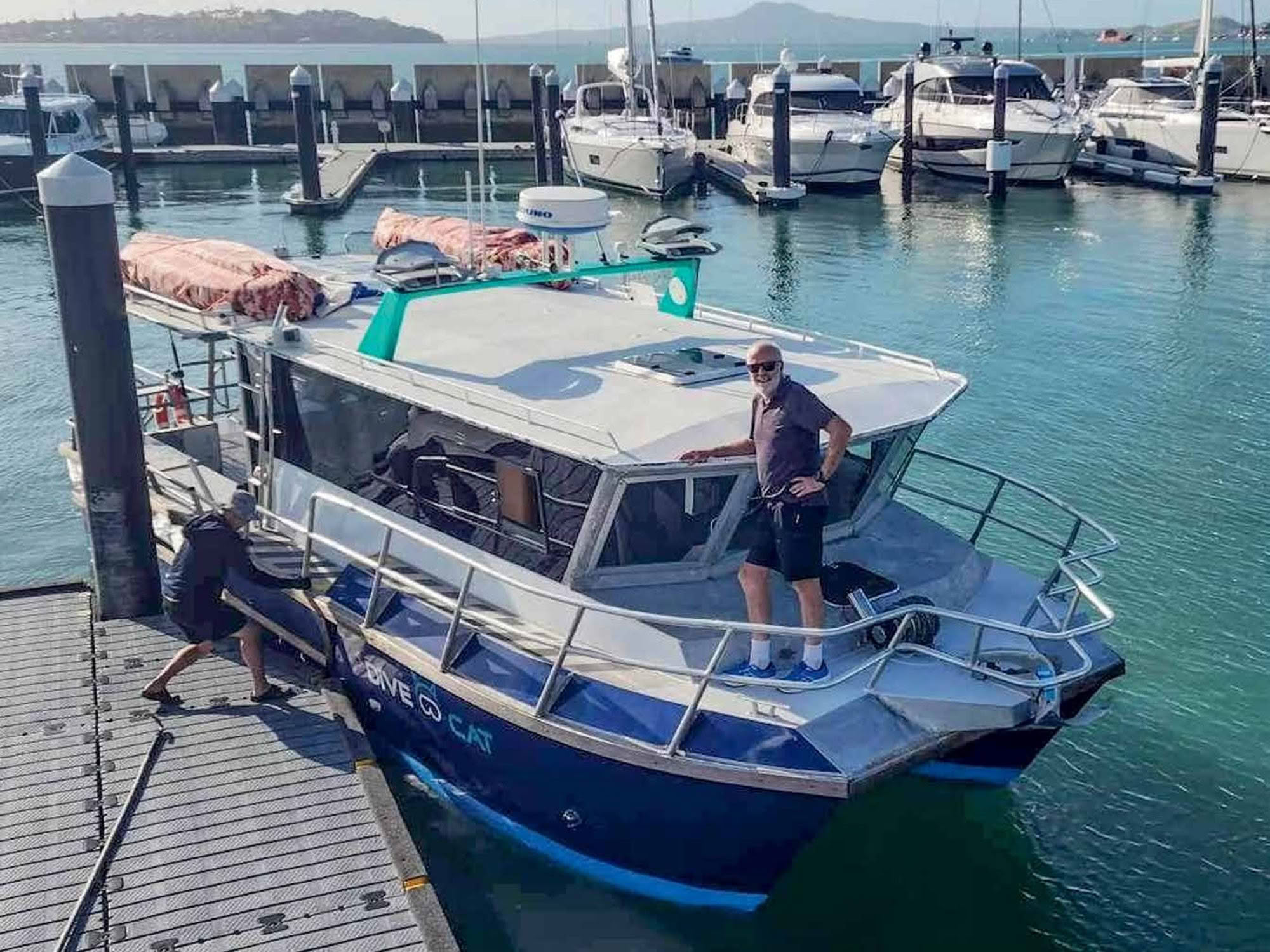

When did you last wash your anchor warp? Not a common maintenance item, but something that may be worth considering, especially if your boat’s more than 10 years old.
A recent trip out on my buddy’s boat we anchored in deeper water than usual, and it transpired his anchor line was slipping on the chainwheel. Instead of the winch’s teeth gripping the rode’s sides, the hard, stiff line simply slipped over the chainwheel without engaging into the slot. Almost no holding power and, left unchecked, all of the rode would have slipped out.
This was easily dealt with at anchor – we simply put a few wraps of warp around the bollard – but raising the anchor did require some additional manual assistance. This is a risky business for fingers – we had to try and push the line into the chainwheel slot without snagging line or fingers. Luckily, we managed it while keeping all our digits.
Back at the marina we realised that years of sitting in the anchor well, wet from salt water and with the chain resting on top, the rode had become caked with salt crystals, pieces of rust and other random crud. What was originally a soft and pliable product was now stiff and hard. Looking at the splice on the chain end showed that this too was in poor condition, but with those hard fibres re-splicing it would be quite a job.
Buying new anchor line was the obvious solution – quick and simple if you have a modest anchor setup. But my own launch has 175m of 16mm braided line. A replacement would cost me well over $1,200 – not a pleasant prospect. Was there a cheaper (but still safe) solution?
Well, yes – the rope could be cleaned, as a quick Google search revealed. But after years of neglect it might be a daunting project. The first thing was to remove the rope, and in the process examine every metre of it and the anchor chain, and in particular the joins between components. In my case I decided the chain was too badly rusted to salvage, so I simply cut it off and discarded it for later replacement.
I also laid out the rope carefully and discovered a major abrasion about 10m along its length. There was also a splice just short of 20m along, which always caused issues when going through the winch. Since I had a long line, I cut off the troublesome 20m section, still leaving me with over 150m of undamaged length. But the rode was badly discoloured and very, very, stiff. Oh, and it smelled very fishy…
I took it home and tried to get rid of the salt. I left it soaking in a big tub of fresh water for two days, replacing the water a few times. Then I added some Salt-Away and left if for a further 24 hours, stirring every now and then. After this the rode felt considerably better, and there was a lot of silt sitting in the bottom of the tub.
WASHING THE LINE
The rode was still very dirty, so a proper wash was called for. But washing it is certainly not a job for a home washing machine. Apart from losing every brownie point I may have ever earned on the domestic front, it simply would not fit into the drum of our machine.
Luckily, many self-service laundromats have a range of big, bigger and mega-big washing machines. The one closest to us had a couple of super-big machines with a 28kg (dry) load limit, which easily accommodated the rope. Would they allow me to wash a smelly old rope, rather than clothes?
I chose a day and time with few people in the laundromat and went there loaded up with detergent. But I discovered that the Liquid Laundromats franchises have a special pet-blanket cycle on their very big machines.
This option has extra pre-wash and rinse cycles and indicated it could cope with large and smelly loads. The brown colour of the wash water revealed how much muck there was in the rode’s fibres. Fabric softener was added to the final rinse water, to soften the fibres.
The process was finished with a tumble dry on medium heat for 45 minutes, not trying to completely dry the rode but to get it touch-dry. You need to be careful not to use maximum heat, as the 87° hot air could seriously weaken the rode.
The line was now visibly cleaner and almost back to the original colour. Note: do not be tempted to add bleach during the wash cycle as this can also weaken the fibres.
At home I completed the drying process by looping the rode over the frame of the wash-line, and by the end of the day it was bone dry and ready to work with. It was now soft, pliable and would be easy to splice. The cuts ends had frayed slightly, but these were easily cleaned up.
With a dry rode I also had an opportunity to re-mark it. A common trick is to mark a strip every 10m along the anchor line with a different colour, indicating the amount of rode paid out. Paint only sticks on clean, dry rode, and you want to try and get the paint right into the weave so it won’t be rubbed off by the chainwheel.
With five different cans of spray-paint available, I used a different one until I got to 50m, then started again and made a double-strip for 60m, 70m and so on. At 100m I started the colours again with a triple band. I made a note of which colour corresponded to which length and created a sticker to place on my dash next to the anchor switch.
After buying a new length of anchor chain (one and a half times the length of the boat) to match my winch’s chainwheel, it was time to replace everything. Splicing braided line onto chain requires a special technique, but once again a quick Google search showed the steps required.
If you’re not confident doing this yourself there are a number of local suppliers who will splice your line for a modest fee. The important thing is for the connection to be sufficiently streamlined to pass through the chainwheel without snagging or slipping.
Back at the boat I used the opportunity to wash out the empty anchor locker, finishing with a scrub using the desk wash and a scotchbrite pad. I found a surprising amount of muck, not to mention a few wayward nuts and bolts…
The last step was to service the winch, an often-neglected maintenance item. I removed the chainwheel and replaced the plastic stripper than cleans the rope out of the slot. Although this was still functional it was showing some wear, so this was an opportune moment to fit a new one. The various shafts were cleaned and lubricated and the chainwheel replaced ready to handle the clean rode and new chain.
REFITTING THE RODE
In the now clean and dry locker I used a bowline knot to tie the end of the line to the eye inside the locker. The choice of knot is important – a bowline allows the rode to be easily untied, without having to cut it, should we ever seriously snag the anchor. We can then drop the rode under a float to be retrieved later on. And a bowline is a strong knot that will not self-loosen.
I laid the rode in reverse sequence to the way it would deploy, creating big soft loops across the bottom of the locker. The chain too was stowed in gentle loops inside the rope loops, so it would deploy easily without tangling. The end of the chain was fed up through the hole into the winch and out around the chainwheel.
Finally – time to re-attach the anchor to the chain, using a swivel. Again, I first checked everything for rust, especially in the hidden recesses. Finding it all good, the anchor was attached and hung over the bowsprit. A quick test of the anchor functionality confirmed everything worked perfectly.
Job all done, and total cost around $250 including the new chain and winch stripper, plus $20 in laundromat costs. BNZ




